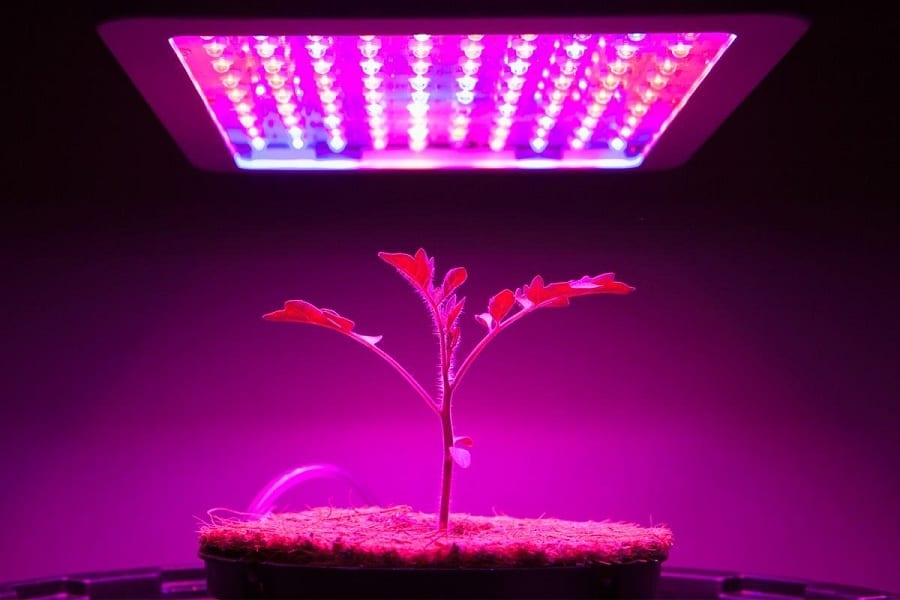Any good gardener knows the value of having the perfect amount of sunlight and shade for their plants. With the importance of this factor alone, it’s no wonder that the market for grow lights has expanded in recent years.
These grow lights can be used for a number of purposes when it comes to indoor gardening, including being used within a grow tent or placed above seedlings to help them germinate during winter.
In the grand scheme of lights, it seems LEDs are the clear winner here, with people even creating a DIY LED grow light setup of their own.
So, how do you make DIY LED grow lights?
To make your own LED grow light setup, you’ll need to calculate how many lights you’ll need based on the space they’re covering and what the wattage requirements are, then depending on where they’ll hang.
There are loads of benefits that LED has to offer over other light sources and they’re all ideal for gardening.
We’re going to dive into why LED matters in a grow light and how you can create your own grow setup and give your plants access to the optimal conditions they need to flourish.
Table of Contents
What is a Grow Light?
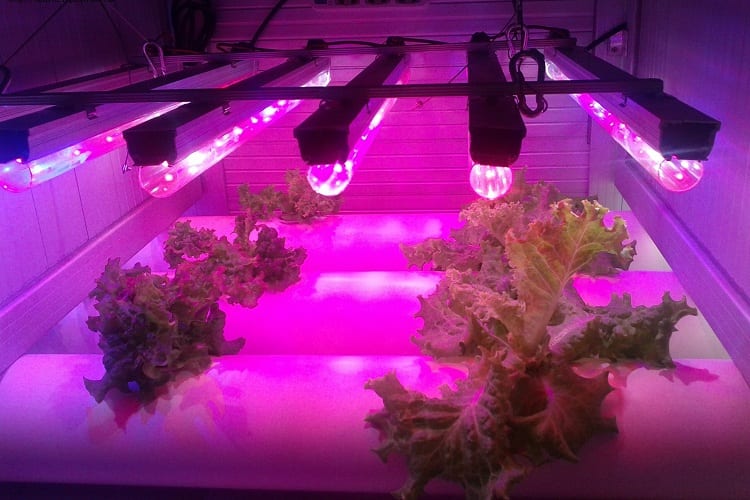
A grow light is an artificial light used in place of the sun and designed to help the plants underneath or near it grow.
These lights are sometimes used as supplemental lighting to assist when the sun isn’t shining, or they can be part of complete setups where the light is the only source of illumination for plants.
An indoor grow light is designed to provide a light spectrum that replicates the sun, but it can be adjusted to suit the specific plants it’s covering.
A gardener can go as far as to change the color, spectrum, and temperature of the light as well, giving their plant exactly what they need to thrive depending on the plant type.
These lights can be used at all stages of plant growth, and are popular for seedlings that are going through germination right up to mature plants.
There’s no limit to how they can be used and when done in the correct setting, they can sometimes be more effective than natural sunlight itself.
Why LEDs Are the Superior Light for Gardening
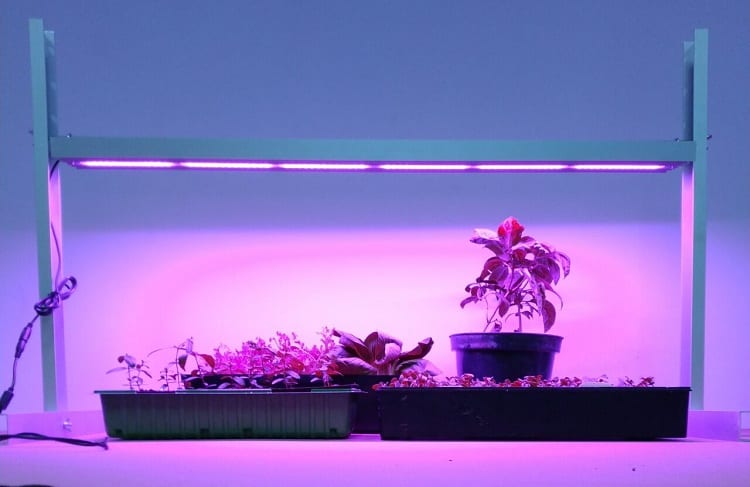
The market for grow lights has boomed in recent years, but the clear standout star is the LED variation.
LED lights offer so many benefits when compared to traditional and conventional HPS lights, including:
- Healthier plants: Plants respond better to LED lighting and can produce better crops than with HPS lights. You can adjust them further to have specific goals like flowering inhibition or root improvement, going above and beyond what other lights offer.
- Energy efficiency: LEDs are known as the energy-efficient option using around half of what other lights do. Additionally, you can optimize the spectrum of an LED light so it only operates on certain colors which save energy further.
- Heat: The heat emitted from an LED light is less than an HPS so they won’t burn your plants. This also helps with their fire safety rating and makes them the safer choice for indoor gardening.
- Lifespan: A standard LED light lasts around eight times longer than an HPS light so it’s cost-effective and more efficient.
The Importance of Colors
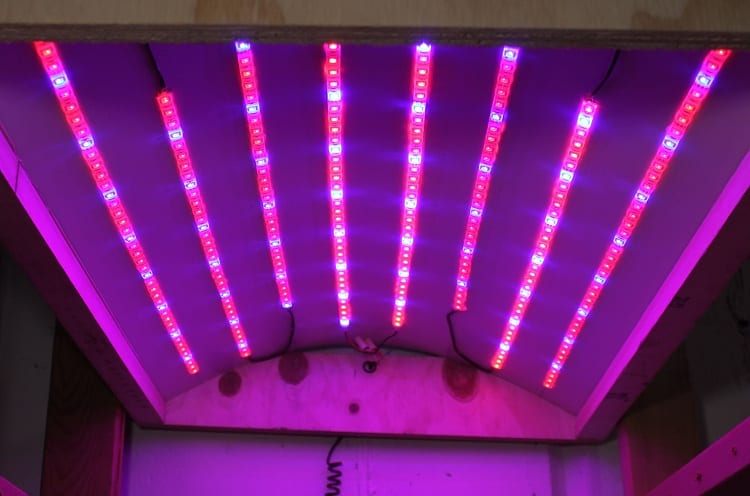
Light has always been important for healthy plant growth, but did you know plants react differently when that lighting is in a different color?
The color that a light emits will impact how much energy a plant absorbs, and this is because they vary in wavelengths. Depending on whether they’re long or short, different levels of energy will be provided to the plant.
Why this matters when choosing LED lights is that you can set these types of lights to certain colors to help you plant attain specific goals.
For example, red and blue lights mixed together can help a plant flower, so when it’s time for this process to happen, an LED light can help you achieve it.
A full spectrum light is one that features many colors and most closely resembles natural sunlight.
With the advanced LED technology now available, gardeners can give the plant exactly what it needs with just a single lighting setup, which has been a gamechanger for indoor growing.
How to Make DIY LED Grow Lights
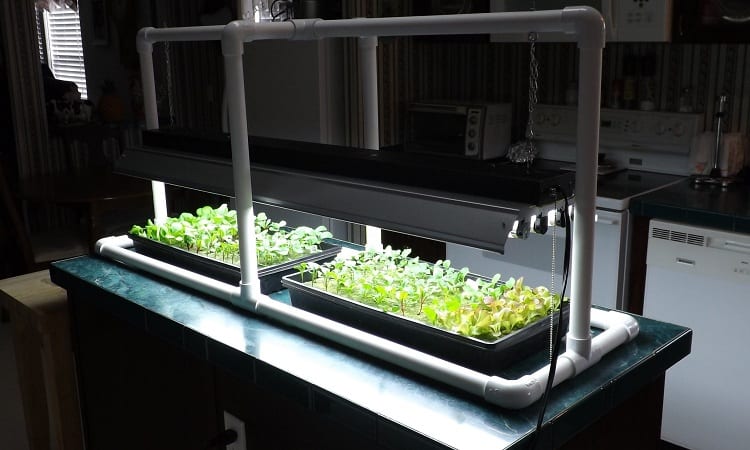
Whether you’re trying to germinate seeds or grow plants to maturity, a decent LED grow light setup will be your key to success.
This is a rough guide you can follow to help you make a lighting configuration at home that makes the most of the wonders of LED.
- Find somewhere in your house where there’s already minimal light, like a garage or room with dark curtains. This will be the best place for an LED grow light setup as it has no interference from outside sunlight.
- Assemble a rack where you plan on placing your seedlings and plants. You’ll want the racks on each shelf to be around the same size as the lights so that it can cover everything you have growing.
- Purchase a long LED full-spectrum light that will cover the length of the shelves. You’ll want one that comes with chains so it can be easily hung from the shelves as well. If you prefer to mount them to the ceiling, there are options to purchase these types as well.
- Adjust the height of the LED lights so that it sits between 12 to 30 inches above the top of the plant. You’ll need to adjust this as your plants grow so many sure the light you choose can accommodate.
- If your lights don’t come with a timer function, you’ll need to set a reminder for yourself each day on when to turn them on and off. The time needed underneath LED lights will vary for each plant type and its age, so spend some time planning this out. Aim for no more than 18 hours a day of light regardless of what’s growing underneath it.
- Place your plants underneath the grow lights on the shelves and check on them daily to see the results. You may need to choose an LED light with higher wattage or use two lights instead of one, but you should be able to tell by inspecting the plants and seedlings what’s needed.
Shining a Light on Your Plants
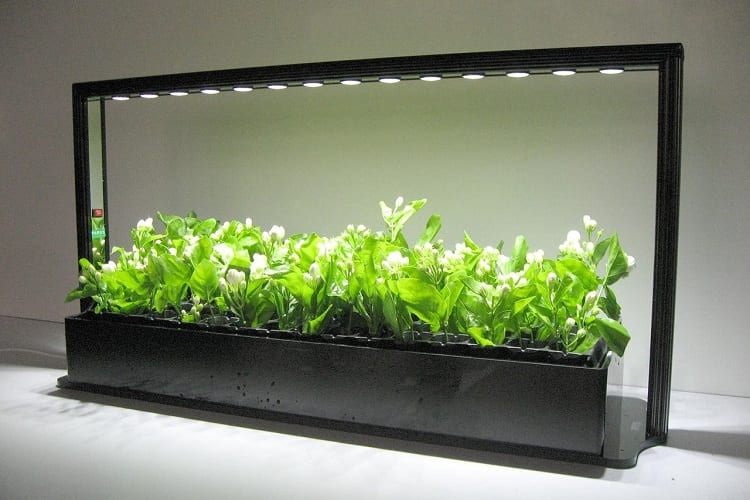
If there’s one thing plants require to be happy, it’s light, and when the sunlight can’t give it to them, using an LED setup is the next best thing.
Whether you want to create a DIY grow light setup at home or use a ready-made lighting kit, your plants will appreciate the extra effort to keep them thriving with this type of setup.
Gaining back control over how much light your plants and seedlings receive can be a gamechanger when the conditions outside are less than perfect.
LED lights are the best way to achieve it and by creating your own grow light configuration, the indoor gardener can have a lot of fun in the process.
Related Questions
There’s no need to rely on the sun just to grow healthy plants, and if you’d rather try your hand at indoor gardening, you don’t have to.
LED lights are a great alternative for some plants and seedlings but if you’re still unsure of how it all works, read on to see the answers to some commonly asked questions.
Yes, you can use any LED light as a grow light, as it’s not just the wattage that matters but also the warmth it provides.
However, for the best results, it’s recommended to use specific lights created for plants and seedlings rather than standard household LED lights.
The purpose of a grow light is to replicate the ideal sunlight conditions outside for plants and seedlings so it’s not recommended to leave them on for 24 hours.
The maximum amount of time a light should be on is 18 hours, and if your plants aren’t responding to this amount, you’ll need a better wattage of grow light.
It will be almost impossible to successfully germinate seedlings from indoors without using the assistance of artificial lighting.
Although a windowsill might get adequate sunlight at various times throughout the day, seeds needs between 14 and 16 hours of light each day consistency to sprout so artificial lighting is the best approach.
Recourses:

